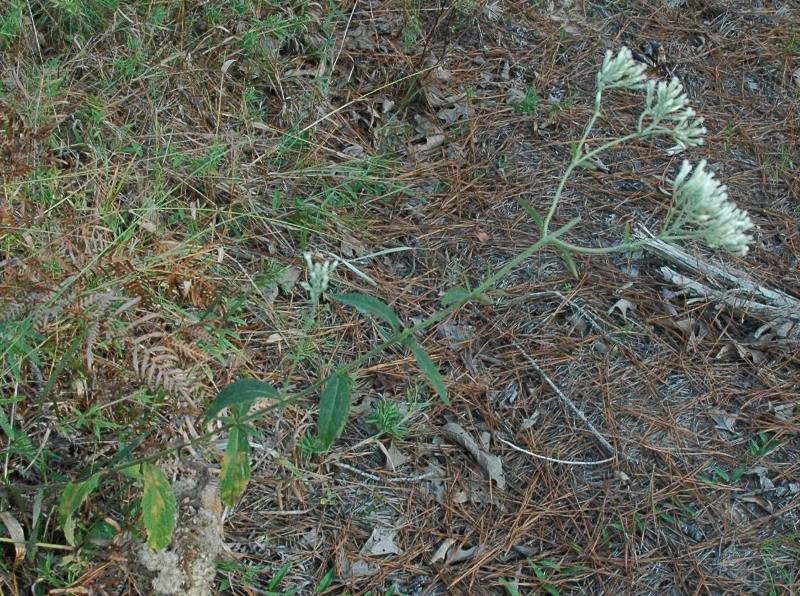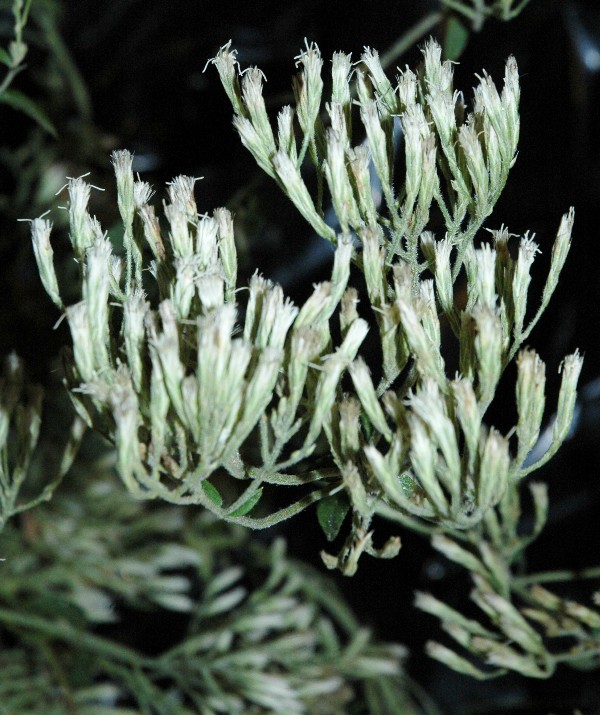Eupatorium sullivaniae
NOTE: Material of E. sullivaniae has not been previously recognized as distinct from E. album, but molecular data show that it is a hybrid-derived apomict that involves E. lancifolium in combination with E. album as progenitors. Plants of E. sullivaniae are also pollen-sterile but produce abundant seed, suggesting that it is an allopolyploid apomict, a common phenomenon in Eupatorium. Although it is morphologically almost identical to E. album, it can be readily separated morphologically by the lack of pollen, and it is in the process of being described as a distinct species.
Distinguishing Features: like other members of the Eupatorium album complex, the involucral bracts are white in color, but in E. sullivaniae they all have glands for most or all of their length; like E. album the leaves average more than 80 mm long, and have pinnate venation, but in E. sullivaniae they are slightly broader and the apex is acute rather than somewhat rounded; pollen is malformed or completely lacking.
Habitat: open areas at edges of woodlands.
Geographic Distribution: occurs in Arkansas, Louisiana, and Mississippi.
Similar Species: Eupatorium petaloideum has more attenuate involucral bracts that completely lack glands and shorter leaves; Eupatorium album has leaves that are somewhat narrower and tend to be more rounded at the apex - both species produce normal pollen
Molecular Data : samples of E. sullivaniae have ITS sequences with a pattern of indel and bp polymorphisms that would be produced by a combination of E. album and E. lancifolium.
Images

